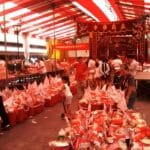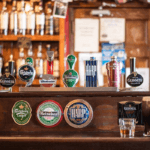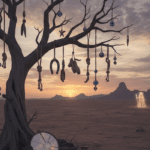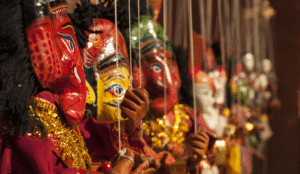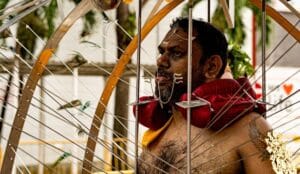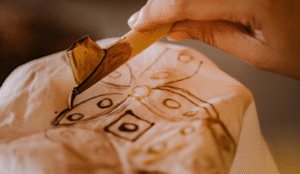Why Cultural Festival in Borneo is unique: A Cultural Celebration Like No Other
The heartbeat of Borneo comes alive once again with the much-anticipated Borneo Cultural Festival 2025 in Sibu, Sarawak. This annual celebration is not just a gathering of performances, food, and traditions—it’s a vibrant testament to the diversity and unity that define Borneo in Malaysia. For locals and travelers alike, this cultural festival is a deeply meaningful opportunity to immerse themselves in the living heritage of one of Southeast Asia’s most culturally rich regions.
Frequently Asked Question (FAQ):
1. What is the cultural festival of Sarawak?
The most prominent cultural festival in Sarawak is the Borneo Cultural Festival, held annually in Sibu. It celebrates the ethnic diversity of the state, uniting Iban, Bidayuh, Chinese, Malay, Melanau, and Orang Ulu communities through music, dance, food, crafts, and traditional rituals. It’s an immersive cultural experience that highlights the rich heritage of Borneo in Malaysia.
2. How much is the ticket for the Sibu Heritage Centre?
As of the latest update, entry to the Sibu Heritage Centre is free of charge. However, donations are encouraged to support the center’s cultural preservation efforts. The center is often recommended for those attending the Borneo Cultural Festival, as it provides background to the town’s ethnic history.
3. What is Gawai Dayak in Malaysia?
Gawai Dayak is a traditional harvest festival celebrated by the Dayak people, particularly the Iban and Bidayuh communities of Sarawak. It takes place on June 1st and marks the end of the rice harvesting season. It features rituals, family gatherings, music, dancing, and traditional food. During the Borneo Cultural Festival, elements of Gawai are often showcased in performances and exhibitions.
4. Which is a famous festival in Malaysia?
Malaysia is home to many famous festivals, such as Hari Raya Aidilfitri, Chinese New Year, Deepavali, Thaipusam, and the Kaamatan Festival. Among cultural festivals, the Borneo Cultural Festival in Sibu, Sarawak stands out for its focus on ethnic diversity, making it one of the most anticipated cultural events in Borneo Island Malaysia.
5. How much is the bus fare from Miri to Sibu?
The bus fare from Miri to Sibu generally ranges between RM 40 to RM 60, depending on the operator and time of booking. The journey takes approximately 8 to 10 hours. Many travelers choose this scenic overland route during festival season to enjoy the countryside of Borneo in Malaysia.
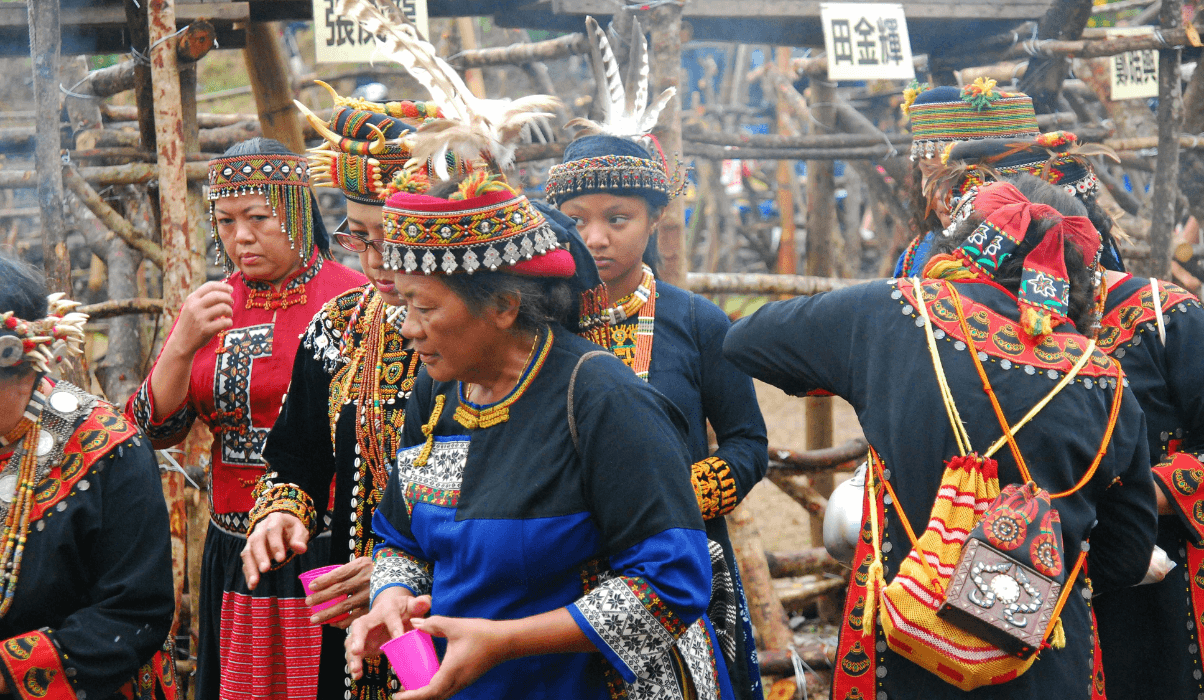
What is the Borneo Cultural Festival?
The Borneo Cultural Festival is much more than a mere calendar event. It is an inclusive and dynamic platform for cultural storytelling, community unity, and heritage preservation. Held annually in Sibu, Sarawak, the festival brings together people from various ethnic backgrounds, highlighting the traditions that form the cultural backbone of Borneo in Malaysia. The event showcases a variety of cultural expressions—traditional music, dances, rituals, crafts, and cuisine—that reflect the ethnic mosaic of the region.
Beyond the vibrant surface of performances and colorful attire lies a deeper purpose: to create intercultural dialogue, promote understanding among communities, and safeguard traditions that risk being lost in the tides of modernity. It is also a festival of pride, giving locals a chance to show the richness of their identity to the world.
For international visitors, the Borneo Cultural Festival offers a rare, immersive cultural experience. It’s a place where you can learn a traditional dance in the morning, taste regional delicacies at noon, and witness a ceremonial performance in the evening—all within one vibrant space. It is an evolving event, shaped not only by tradition but also by innovation, where digital and social media play growing roles in storytelling and promotion.
History of Borneo Cultural Festival
The origins of the Borneo’s Festival date back to the early 2000s when the Sibu Municipal Council envisioned a cultural event that could unite the diverse communities of Sarawak and serve as a tourism draw for the region. Initially modest in scale, the event quickly gained traction as it struck a chord with both locals and tourists.
Over the years, the festival has grown in size, scope, and significance. What began as a local showcase of Iban, Chinese, and Malay culture has expanded to include Bidayuh, Melanau, and Orang Ulu communities, as well as performances from neighboring Southeast Asian countries. This evolution reflects Sarawak’s inclusive ethos and the Malaysian government’s broader effort to recognize and celebrate its multicultural identity.
The event is now one of the most anticipated cultural festivals on the island of Borneo. It has played a key role in cultural preservation efforts by giving artisans, musicians, dancers, and chefs a high-profile platform to share their knowledge and skills. It has also empowered communities by transforming culture into a sustainable source of income.
Each edition of the festival tells a different story, often influenced by contemporary themes such as environmental conservation, youth involvement, and digital heritage preservation. In many ways, the Borneo Cultural Festival serves as both a mirror and a lens: reflecting the traditions of the past while offering a vision for the future.
The Borneo Cultural Festival is a week-long annual event held in Sibu, a charming riverside town in Sarawak, located on the vast and biodiverse Borneo Island Malaysia. Unlike generic festivals, this one brings together the multicultural essence of the island—uniting the Iban, Bidayuh, Malay, Melanau, Chinese, and Orang Ulu communities. Each group showcases their unique traditions through traditional dances, music, food, fashion, and handicrafts.
The cultural festival is not only a celebration; it’s an educational experience, especially for younger generations. It allows them to rediscover their roots and for outsiders to appreciate the deep cultural tapestry that makes Borneo so unique.
The setting: Why Sibu, Sarawak?
Sibu, Sarawak is often referred to as the “Swan City” and sits on the banks of the Rajang River—the longest river in Malaysia. Known for its rich cultural diversity, Sibu is home to a large Chinese community, as well as significant populations of Iban and Melanau people. With such a dynamic ethnic makeup, Sibu becomes the ideal backdrop for the Borneo Cultural Festival 2025.
Unlike larger cities, Sibu, Sarawak offers an intimate and authentic glimpse into community life. During the cultural festival, its streets are transformed with color, sounds, and aromas that enchant every sense. The local government’s active support in preserving culture and promoting tourism adds to the authenticity of the event.
Highlights of Borneo Cultural Festival 2025
- Traditional Dance and Music Performances
Dance stages light up nightly with mesmerizing performances from various ethnic groups. Expect to see the Iban ngajat, the graceful Chinese fan dances, and the rhythmic Malay zapin. These performances are not just entertainment—they are stories told through movement. The energy and pride shown by the dancers reflect the importance of cultural identity in their communities.
- Cultural Villages and Exhibitions
Temporary cultural villages are constructed to allow visitors to step into different lifestyles. Walk into an Iban longhouse or witness a Melanau stilt home replica. Each booth includes cultural artifacts, traditional attire, and interactive storytelling sessions. For many attendees, these villages provide their first hands-on experience of indigenous life on Borneo Island Malaysia.
- Food Paradise
No cultural festival is complete without food. From bamboo chicken to kuih-muih and sago worms, the food bazaar is an exploration of taste that spans generations and communities. Visitors can savor traditional recipes that have been passed down through generations. Local chefs and home cooks take pride in preparing and presenting dishes that are often unavailable outside of their communities.
- Ethnic Fashion Shows
Another major draw is the fashion segment that highlights traditional costumes of the ethnic groups. Each costume reflects a blend of cultural values, spiritual beliefs, and historical background. Visitors often take part in dressing up, which adds a fun and personal touch to the experience. These costumes are more than just clothes—they are symbols of heritage.
- Craft Workshops and Demonstrations
Visitors can try their hands at traditional beadwork, mat weaving, blowpipe crafting, and wood carving. Local artisans explain not only how but why each craft is made—connecting practice with philosophy. It’s a hands-on education that links tradition with tangible experience. These sessions also encourage young Malaysians to take pride in their roots and help keep ancient skills alive.
- Traditional Dance and Music Performances
Each evening, the main stage transforms into a spectrum of radiant colors, rhythmic sounds, and powerful storytelling through movement. The Iban ngajat dance begins with war cries and rhythmic footwork, symbolizing the bravery of ancestors. The Chinese community performs an elegant fan dance that tells tales of nature and harmony, while the Malay zapin features graceful steps and melodic beats. In recent editions, performances from the Bidayuh, Melanau, and Orang Ulu have been added, including bamboo flute solos and ritualistic chants that evoke ancient traditions.
Young performers from cultural schools take the spotlight during matinee shows, reviving old choreography and introducing fresh interpretations. It’s a live theatre where tradition meets creativity, and every shuffle and gesture carry deep symbolism.
- Cultural Villages and Exhibitions
Distributed across the festival grounds are immersive cultural lifestyle zones. In the traditional Iban longhouse, elders share folktales and open interactive blowpipe lessons. Step into the Melanau “tumbang pillars” stilt house and watch live weaving demonstrations. The Orang Ulu village illustrates intricate beadwork and wood carving—each item revealing ancestral stories about rivers, wildlife, and spirituality.
Interactive stations include traditional games, like the Malay congkak and Chinese tai-chi tasters. Heritage storytellers narrate origin myths under rammed-earth shelters, complete with ancestral tunes in the background—a beautifully atmospheric blend of lore and lineages.
- Food Paradise
The food bazaar is a culinary odyssey. Glass showcases locally caught fish, and bamboo-fired grills draw in hungry festivalgoers. Try manok pansoh (chicken cooked in bamboo), laksa sarawak enriched with sambal belacan, or the adventurous sago worms—a crunchy snack revered by locals.
A special “heritage cooking pavilion” invites you to learn from regional cooks crafting Peranakan dishes like ayam buah keluak, Melanau sago dumplings, and traditional desserts like bingka korea (cassava cake). Workshops on fermenting budu (anchovy sauce) and preparing tiger nut cream are framed as part cooking class, part cultural ritual.
- Ethnic Fashion Shows
Fashion shows bring traditional garments to life on dazzling runways. Witness the majestic selampai of the Melanau, the hand-stitched Malaysian Batik gowns, and the robust yet elegant Orang Ulu cloaks adorned with hornbill motifs. Geo-themed runway shows feature couples in wedding attire, tapping into tradition and modern romance.
Celebrity guests, such as local designers and cultural ambassadors, explain the meaning behind each stitch, beading technique, and motif—emphasising how clothing embodies spiritual beliefs, family values, and regional pride.
More Than Just a Festival
The Borneo Cultural Festival 2025 aims to go beyond entertainment. It’s a platform to promote cultural sustainability. In a rapidly modernizing world, many indigenous traditions risk fading into history. This cultural festival brings them back to the center stage, preserving them through participation, appreciation, and economic support.
Local schools participate actively in the event, often bringing students to perform or manage booths. This grassroots involvement ensures that the younger generation doesn’t just witness culture—they live in it. Such involvement builds pride, cultural knowledge, and mutual respect among diverse communities on Borneo in Malaysia.
Cultural Festival 2025 and Its Economic Impact
With the increasing global interest in cultural and eco-tourism, Borneo in Malaysia has become a rising star. The Borneo Cultural Festival 2025 is expected to draw thousands of domestic and international visitors, boosting local economies from hotels to food vendors to craft sellers.
Moreover, the festival helps small artisans and traditional performers find a new audience. Their visibility during the event often translates into long-term opportunities, including teaching gigs, online sales, and collaborations with cultural institutions.
Local government initiatives and tourism boards work together to ensure that the benefits of this cultural festival extend beyond the event itself, contributing to the year-round cultural economy of Sibu, Sarawak.
Sustainability and Eco-Friendliness
Borneo Island Malaysia is known for its environmental richness, and the festival organizers are keen on protecting that heritage. Many of the stalls and decorations use biodegradable materials. Visitors are encouraged to bring reusable containers and bottles. There are also eco-talks and green campaigns included in the itinerary.
This combination of cultural preservation and environmental awareness makes the cultural festival even more relevant today. The incorporation of sustainable practices ensures that this celebration of heritage does not come at the expense of nature.
A Tourist's Guide to Attending BCF 2025
When & Where:
- Date: Expected mid-July 2025 (Exact date to be announced)
- Location: Town Square, Sibu, Sarawak
How to Get There:
Sibu is accessible via direct domestic flights from Kuala Lumpur, Kota Kinabalu, and Kuching. You can also take river transport if you want a more adventurous route. Road access is available through the Pan Borneo Highway, offering scenic drives across Borneo in Malaysia.
Accommodation Tips:
From budget hostels to boutique hotels, Sibu, Sarawak has a range of options. Booking early is advisable, as places fill up fast during the cultural festival. Many local homestays offer unique opportunities to live with a host family, enriching your understanding of daily life and traditions.
What to Bring:
- Comfortable clothing (it’s hot and humid)
- Camera or phone with ample storage
- Reusable water bottle and tote bags
- Openness to learn and engage
- Notebook for journaling cultural experiences
Personal Stories: What Locals Say
Auntie Liew, a local Melanau woman who has been participating in the cultural festival for over a decade, says:
“It’s not just about performance; it’s about remembering who we are. Every dance step and dish remind me of my grandmother.”
Meanwhile, 23-year-old James from the Iban community shares:
“It’s the only time I see all of us—Malay, Chinese, Iban, and more—coming together as one. We may be different, but here, we celebrate that.”
Local vendor Mei Ying, who sells handmade beaded jewelry, says:
“This cultural festival gives small artisans like me a place to shine. I meet people from all over the world who appreciate our traditions. It motivates me to keep doing what I love.”
Future of Borneo Cultural Festival
The Borneo Cultural Festival 2025 is expected to set a new standard in cultural tourism. With its growing popularity, there are talks of live streaming events and hosting year-round cultural education programs inspired by the festival.
Plans are also underway to digitize some of the crafts and performances, allowing global audiences to appreciate the beauty of Borneo in Malaysia. This ensures that the spirit of the festival reaches far beyond Sibu, Sarawak.
Efforts are being made to include more youth-focused programs to ensure the festival remains relevant to younger generations. Partnerships with universities, NGOs, and digital platforms will help scale its reach while maintaining authenticity.
